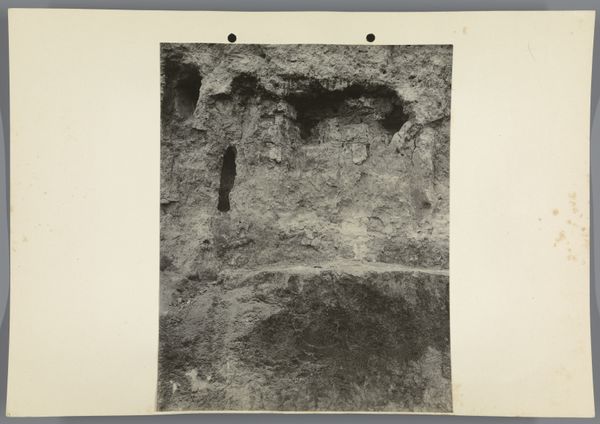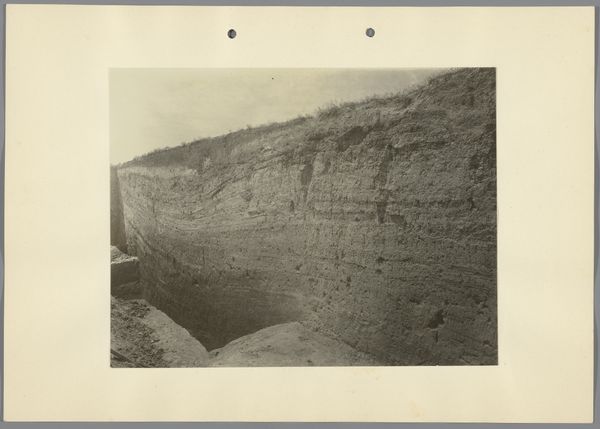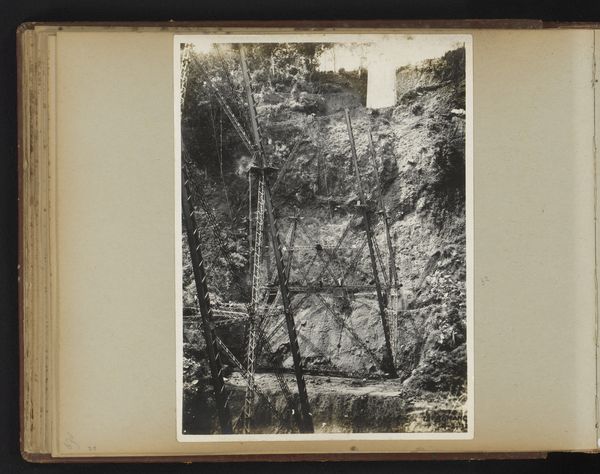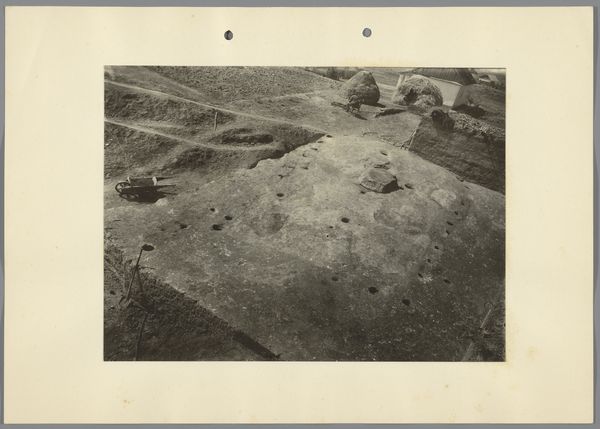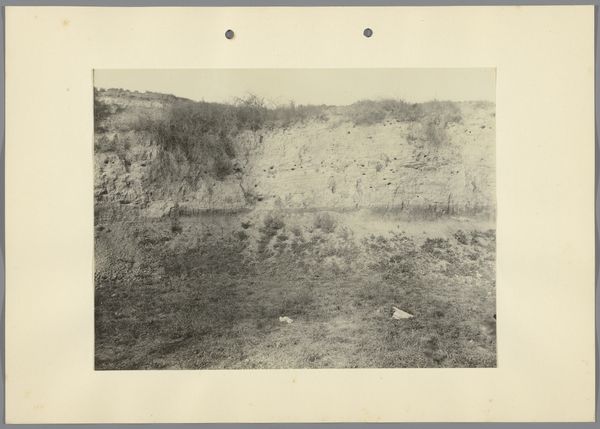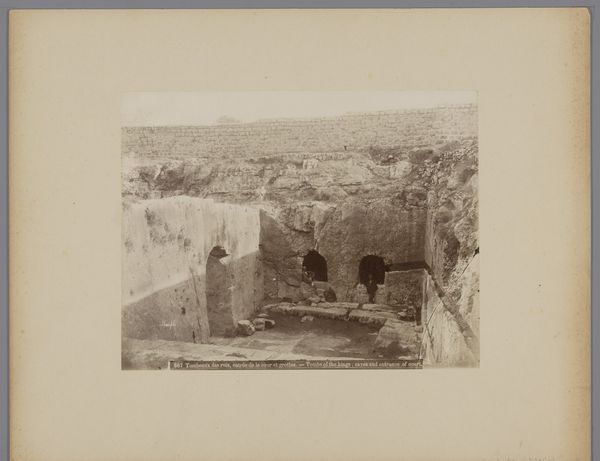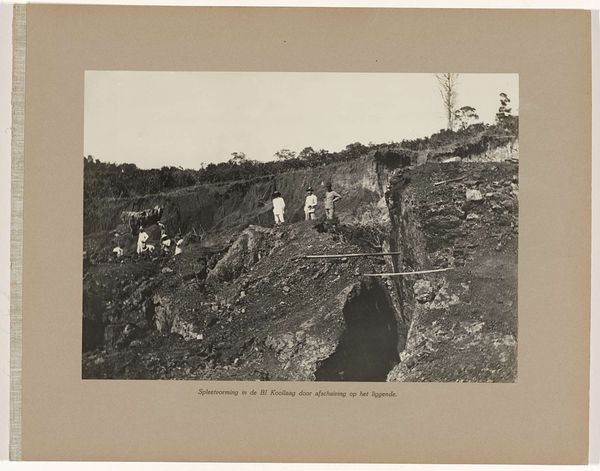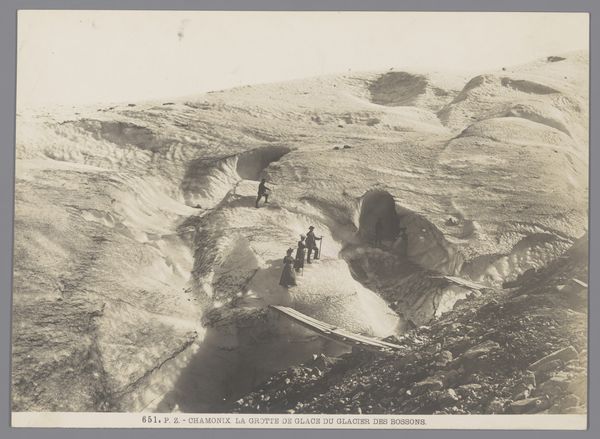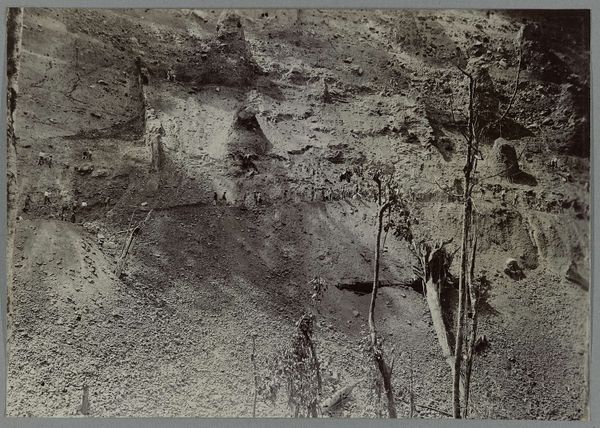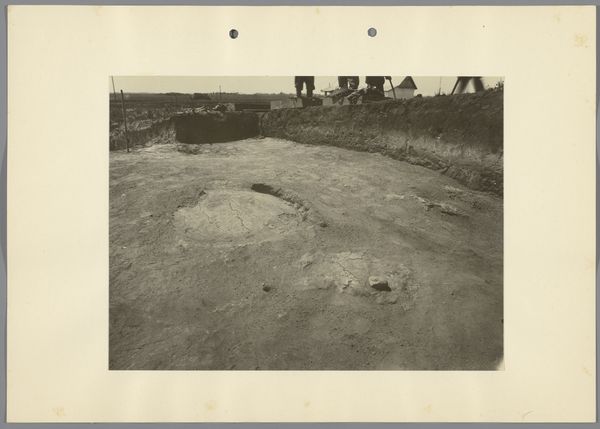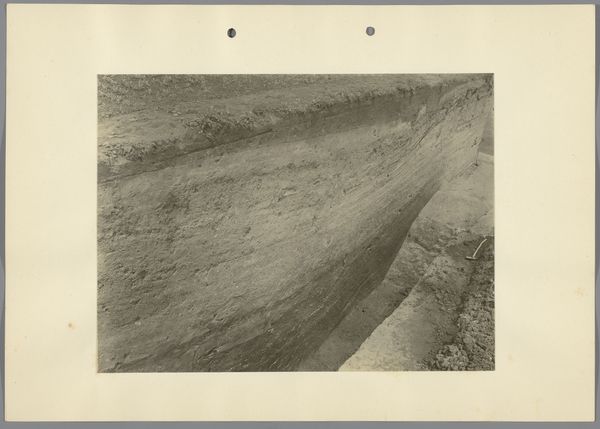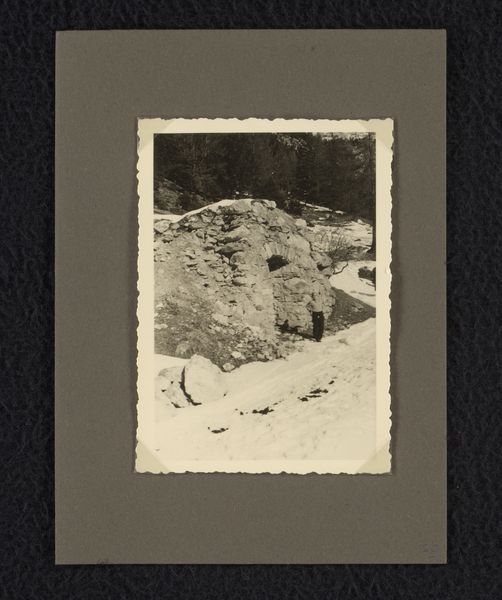
photography, gelatin-silver-print
#
landscape
#
street-photography
#
photography
#
gelatin-silver-print
#
history-painting
Dimensions: height 211 mm, width 172 mm, height 240 mm, width 339 mm
Copyright: Rijks Museum: Open Domain
Curator: This gelatin silver print from 1928 documents an archaeological dig site in Hungary, entitled "Skelet, gevonden bij archeologische opgravingen te Hongarije." Editor: There's a striking formality in how the skeleton is posed, isn’t there? Almost as if staged for a macabre portrait, centered within that excavated rectangle of earth. The black and white adds to that sense of history—and stark finality. Curator: Absolutely. Photography, especially at this time, serves as an almost sacred form of documentation. Consider the archaeological context. We aren't just viewing bones, but a life, deliberately arranged for burial within a cultural landscape. That positioning within the earth could signify their beliefs about death and the afterlife, now faded into visual symbols. Editor: And the rectangular frame, of course, mirroring the edges of the print itself. The photographer cleverly uses leading lines of the excavated earth to direct our gaze inwards, towards the skull, which seems to stare directly out at the viewer. The photographer transforms a moment in an archeological site into something so visually deliberate. Curator: It's interesting that you use the word “deliberate.” There’s an emotional weight here. The symbol of the skull staring out confronts us. It confronts our own mortality and reminds us of the countless others that came before, reduced now to mere vestiges in the earth. Photography at this time still held spiritual connections as objects in seances did during the 19th century, capturing the past in present time. Editor: Do you find that the gelatin silver print enhances that quality? Curator: Very much. The tonal range captures fine details in the bone, as well as texture, the subtle gradations in earth, providing an almost spectral depth and tactile quality to this relic. Editor: It's precisely those careful gradations, as you mentioned, that elevate the piece beyond simple record keeping and allows for this ghostly beauty, isn't it? It captures history with a very unique technique. Curator: Exactly. When observing that now it helps re-conceptualize the past and how one interprets archeology through photographs. Editor: A ghostly testament to both lives lived, and the art of image-making.
Comments
No comments
Be the first to comment and join the conversation on the ultimate creative platform.
